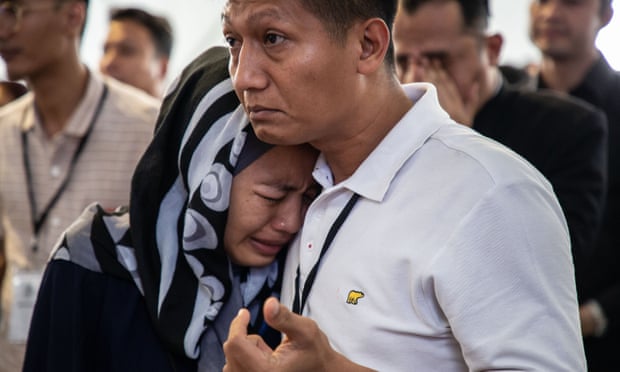Lion Air crash: pilot fought to keep plane in air, says report
Addressing the Indonesian parliament in Jakarta, Nurcahyo Utomo, the aviation head of the national transportation safety committee, said data retrieved from the flight recorder showed that the pilot “continued to fight until the end of the flight”, according to a report in the Australian newspaper.
Nurcahyo also confirmed the aircraft had experienced “the same obstacles” on the previous day’s flight from Denpasar to Jakarta but on that occasion the pilot had managed to keep control of the plane.
 |
| Relatives of passengers of the Lion Air plane that crashed into Indonesian waters on 29 October, killing all 189 people onboard. Photograph: Donal Husni/Zuma/Rex/Shutterstock |
Answers are still being sought about why, the new Boeing 737 Max airplane, operated by one of Indonesia’s biggest airlines, plummeted into Indonesian waters moments after takeoff.
In a detailed account of the flight’s final moments, Nurcahyo said the graphs from the flight recorder showed the plane experienced technical difficulties shortly after takeoff as the captain and co-pilot began receiving different airspeed readings.
The plane then began careering up and down, to a height of 5,000ft.
As the aircraft began to nosedive, the pilot attempted to offset the action, fighting to keep it in the air. However, it became “increasingly difficult to control the airplane”, said Nurcahyo, as the load on the steering wheel became too heavy for the pilot to manually control, and “then the plane drops”. The aircraft crashed into the sea at a speed of more than 400mph.
Analysis of the flight data recorder confirmed the 737 Boeing had no engine problems. Investigators are still searching for the cockpit voice recorder, which may provide more answers on how the tragedy occurred.
Boeing has denied it “intentionally withheld” information about modifications to the plane’s anti-stall system.

